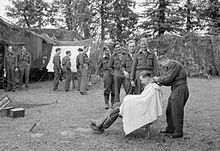
Number 25 (Fighter) Squadron is squadron of the Royal Air Force, having reformed on 8 September 2018.
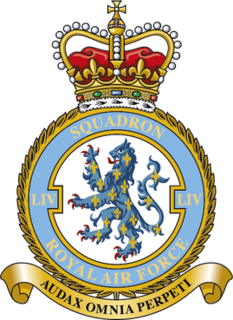
Number 54 Squadron is a squadron of the Royal Air Force based at RAF Waddington, Lincolnshire. On 1 September 2005, it took on the role of Intelligence, Surveillance and Reconnaissance (ISR) Operational Conversion Unit, and is currently responsible for training all RAF crews assigned to the MQ-9A Reaper, Shadow R1/R2, RC-135W Rivet Joint and Poseidon MRA1. It also controls the RAF ISR Warfare School (ISRWS) who run the Qualified Weapons Instructor Intelligence, Surveillance and Reconnaissance and QWI Reaper Courses.
No. 231 Operational Conversion Unit was a Royal Air Force Operational conversion unit.

Number 72 (Fighter) Squadron of the Royal Air Force is a training squadron that is currently based at RAF Valley using the Beechcraft Texan T.1 to deliver Basic Fast Jet Training (BFJT).

Royal Air Force Acklington, simply known as RAF Acklington, is a former Royal Flying Corps and Royal Air Force station located 3.2 miles (5.1 km) south west of Amble, Northumberland and 8.8 miles (14.2 km) north east of Morpeth, Northumberland.
Royal Air Force Grangemouth or more simply RAF Grangemouth is a former Royal Air Force station located 3 mi (4.8 km) north east of Falkirk, Stirlingshire, Scotland.
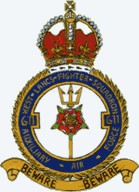
No. 611 Squadron is a British Royal Air Force squadron. It was first formed in 1936 and was disbanded in 1957 after seeing combat as a fighter unit during the Second World War. It was reformed as a reserve squadron in 2013.

No. 616 Squadron is an active Reserve unit of the Royal Auxiliary Air Force (RAuxAF) assigned to the RAF ISTAR Force at RAF Waddington. It was originally formed as a unit of the British Auxiliary Air Force in 1938, active throughout World War 2 as a fighter unit, becoming the 1st operational RAF unit to fly jets and disbanded in 1957. The unit reformed in its current guise in April 2019 as 616 Squadron Royal Auxiliary Air Force.
No. 520 Squadron RAF was a meteorological squadron of the Royal Air Force during the Second World War.
No. 240 Operational Conversion Unit RAF is a former Royal Air Force Operational conversion unit which was formed by a series of mergers, it then became No. 27 Squadron RAF in 1993.
No. 521 Squadron of the Royal Air Force was a Second World War meteorological observation unit operating from Norfolk.
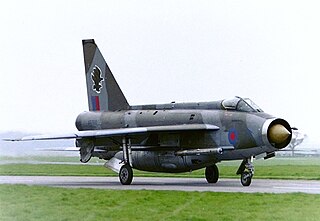
Royal Air Force Binbrook or RAF Binbrook was a Royal Air Force station, now closed, located near Binbrook, Lincolnshire, England. The old domestic site has been renamed to become the village of Brookenby. RAF Binbrook was primarily used by Bomber Command in the Second World War. The Central Fighter Establishment moved to Binbrook from RAF West Raynham between 1959 and 1962 and two English Electric Lightning squadrons were stationed there between 1965 and 1988.
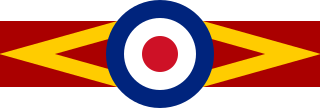
No. 80 Squadron RAF was a Royal Flying Corps and Royal Air Force squadron active from 1917 until 1969. It was operative during both World War I and World War II.

No. 615 Squadron was a unit of the British Auxiliary Air Force and later the Royal Auxiliary Air Force between 1937 and 1957.
No. 136 Squadron RAF was a short-lived RAF unit that saw no action in World War I, but upon reformation became the highest scoring unit in South East Asia Command during World War II. Shortly after the war the squadron was disbanded.
No. 529 Squadron RAF was a radar calibration unit of the Royal Air Force during World War II. The unit had the distinction to be the only RAF unit to fly autogyros and helicopters operationally during World War II.
No. 534 Squadron RAF was one of the ten Turbinlite nightfighter squadrons of the Royal Air Force during the Second World War.
No. 537 Squadron RAF was one of the ten Turbinlite nightfighter squadrons of the Royal Air Force during the Second World War.
No. 539 Squadron RAF was one of the ten Turbinlite nightfighter squadrons of the Royal Air Force during the Second World War.
No. 67 Group RAF is a former Royal Air Force group which was active between 1 April 1950 and 1 February 1957. It was formerly RAF Northern Ireland a former Royal Air Force command based in Northern Ireland, United Kingdom.

